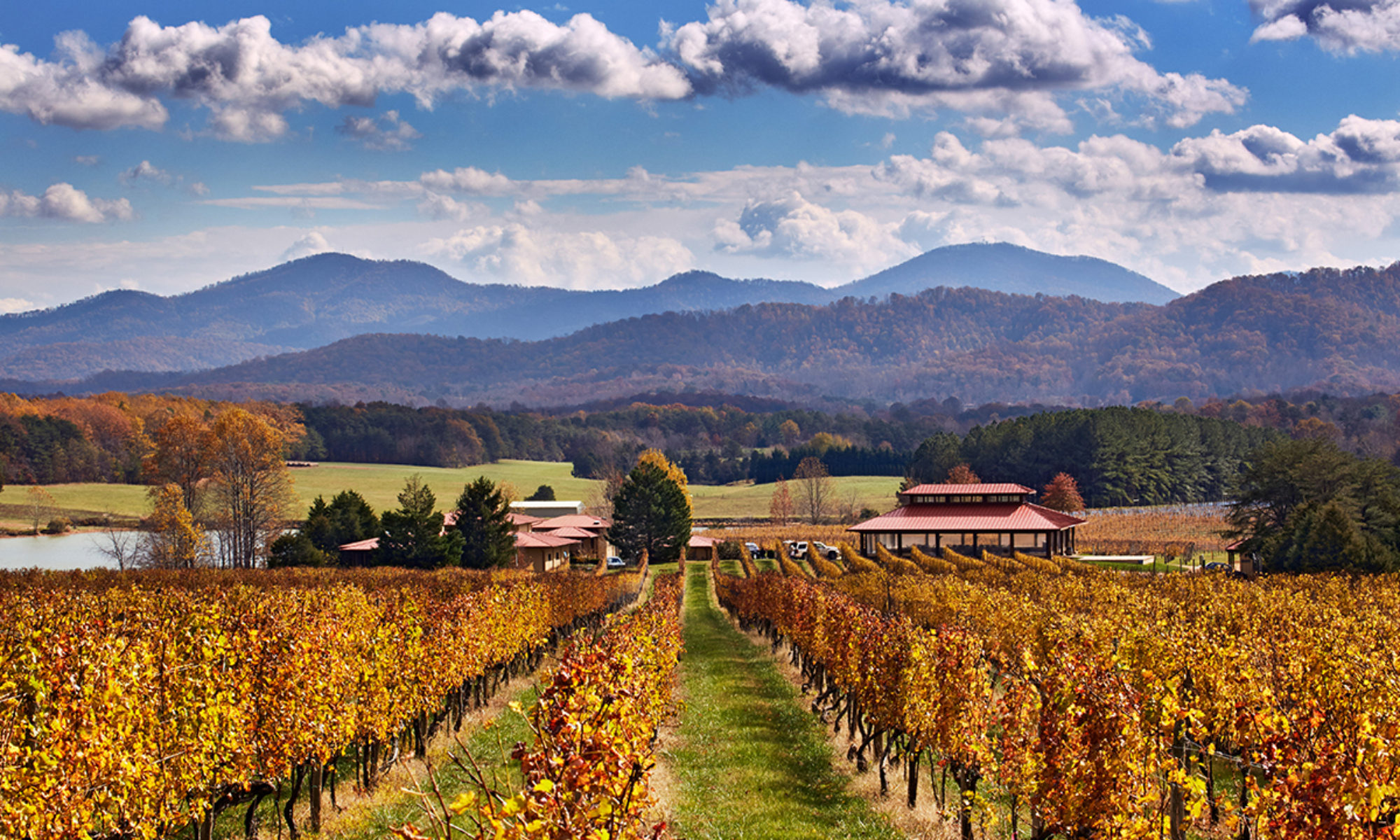Glen Manor Vineyards
Some 10 miles from Front Royal, on the east side of the Shenandoah Valley. Glen Manor’s vineyards were first planted in 1995 by Jeff White, high on the hillside of a farm owned by the family (which arrived in the late 1700s) from 1901. Glen Manor qualifies as a “Century Farm,” recognized by Virginia as being owned by five generations or more in the same family. The Vineyard website has a lovely description of the family’s early days on the land here, and several of the buildings constructed at the time remain in use – including houses for ice, hens and turkeys. Jeff worked with Jim Law at Linden Vineyards before opening his own winery in 2008. Vineyard area planted is increasing every year, and now at 17 acres. In 2014, Jeff was named Virginia Wine Grower of the year by the Virginia Vineyards Association.
Wine. One of the Top 20 wineries in Virginia. Glen Manor’s Cabernet Franc was selected in 2019 as part of the Virginia’s Governor’s Cup case: the top 12 wines in the state as chosen by tasters in the annual state-wide competition of over 500 wines. Their Hodder Hill was similarly recognized as part of the Governor’s Case in 2016. The St Ruth was also awarded a gold medal at the 2019 competition, while the Petit Manseng was awarded a silver medal. At the 2020 Governor’s Cup competition, the 2015 Hodder Hill was awarded a gold medal, while the 2014 received a silver. Three Hodder Hill (a Cabernet Sauvignon-led red blend) vintages were awarded gold medals in the 2018 competition. The St Ruth is an excellent right bank-style Bordeaux blend. Hugh Johnson’s annual global wine guide gave Glen Manor two stars in the 2020 edition. The annual production range is usually 5-6 types of wine, so less extensive than some other wineries. “Wine with a sense of place” is Glen Manor’s philosophy.
Setting. One star. Beautiful views of the mountains. Small tasting room with plenty of outdoor space. Generally uncrowded, no groups. No food for sale, bring your own.
Stories. One star. Ancient Americans in Virginia: the Flint run and Thunderbird sites. Jeff White rightfully takes pride in his family going back a long way in the Shenandoah, but others have been here even longer. The Clovis Culture dates back some 13,000 years, named after a series of bone and ivory tools – most notably sharp, fluted spear points — found near Clovis, New Mexico. Clovis culture sites have been identified throughout North and Central America and into South America. The people who manufactured these tools are considered the ancestors of the indigenous peoples of the Americas (although discovery of more ancient sites in south America have led to the rise of competing theories). It is thought that the Clovis culture evolved into smaller sub-cultures following the disappearance of Mammoth and other mega-fauna. These peoples evidently found their way to what became Virginia. The Flint Run site, located at the junction of Flint Run and the South Fork of the Shenandoah (just south of Gooney Run campground, off of Highway 340), in Warren County near Front Royal, is a major site of the Paleoindian Clovis culture. It was designated a National Historic Landmark in 1977 and has yielded evidence for what is possibly the oldest structure in North America. The site is one of three which make up the Thunderbird archaeological complex which consists of 2,500 acres of sites spanning the prehistoric era. Radiocarbon dates indicate some of the occupations date to 9,900 BC. Thunderbird is a group of sites located in and around a jasper quarry, which the Paleoindians used to create tools, such as the Clovis points. The quarry was in use for over 4,000 years, until about 6,500 BC.
